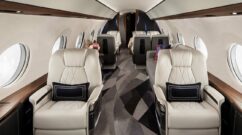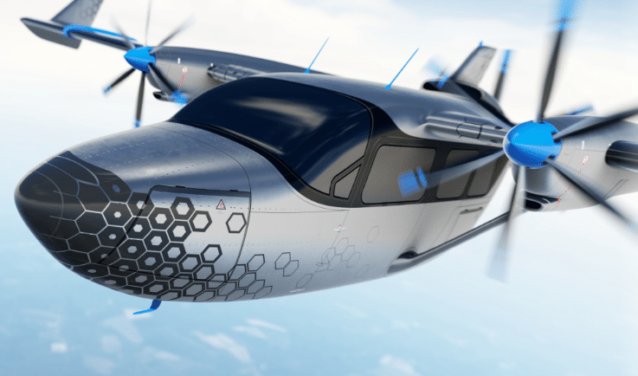Since 2017, VoltAero is a French startup working on a hybrid private jet model. This project is led by Jean Botti, (CEO of VoltAero) former director of the Airbus innovation department. His former position makes him a pioneer in aeronautical innovation. He was in charge of the E-fan project. The first 100% electric airbus aircraft that crossed the Channel in 2015. VoltAero is not the first responsible private jet project, we also find Alice.
Creating a hybrid aircraft nowadays requires a lot of technological advances. How does the French startup intend to meet this challenge? What will be the technical specificities of this new aircraft? These are the points that we will shed light on in this article.
History of Cassio, the French hybrid private jet
VoltAero is a startup existing since 2017. Despite its young age, the team has 75 years of expertise in the field of aeronautics. Notably with the Electric Cri-Cri project in 2011 and the E-fan project in 2015.
To create a hybrid private jet is a precise challenge. The weight of the aircraft: electric batteries weigh much more than a full tank of paraffin. It is therefore necessary to succeed in creating a light structure to compensate for the weight of these indispensable batteries. The team is working hand in hand with various partners to achieve this. The aim is to achieve a final product “Made in France” that is viable and certified over the long term.
Aero Composites Saintonge (ACS), is a French company that is working closely with VoltAero on this ambitious project. It is an expert company in innovative composites. They are supporting the hybrid private jet team on the development of a lightweight composite that meets safety standards. They are also in charge of manufacturing the Cassio 1 test prototype. In addition, their design office dedicated to electric propulsion is working with VoltAero on the creation of the batteries.
Safran Electrical & Power, a subsidiary of the renowned engine manufacturer, supports VoltAero. The French group, a specialist in aeronautics, is equipping the Cassio 1 with ENGINeUS 45 engines. The purpose of this prototype is to test the powertrain.
VoltAero is also working with Solution F. A group originating from motor racing. Accustomed to a culture of challenge, Solution F offers the French startup hybrid propulsion solutions.
VoltAero’s latest important partner is the New Aquitaine region. They are supporting and monitoring the project, particularly with a view to setting up the final assembly line in the region.
The latest news from VoltAero
On 21 October 2020, we were able to witness the first flight of the Cassio 1 prototype. One of the primary challenges of the Cassio 1 is to drastically reduce the noise generated by a private jet of this size. The challenge is not necessarily met during the take-off and landing phases. However, during the rest of the flight, the difference is obvious. This is a first victory for the young manufacturer based in Médis (in Charente Maritimes).

This first flight was a success and encouraged the arrival of good news for VoltAero. Indeed, on 19 November, the French team made an announcement in a press release. The recent aircraft manufacturer has been selected by the European Innovation Council. They will therefore benefit from financial aid as part of the European Green Deal strategy and the recovery plan. Jean Botti and his team will thus receive a total of €13.1 million in aid. For VoltAero, the commitment of this European institution in the financing of the Cassio project is a token of confidence in this contemporary challenge.
The future of VoltAero, the French hybrid private jet
The young startup announces its construction schedule, aiming to obtain certifications and the first serial sales by 2023. This is a tight schedule for the ambitious builder. A tight but not unrealistic schedule.
As a reminder, the range of Cassio aircraft includes a total of 3 models. These three aircraft will all be very similar. What will really distinguish them are the number of seats on board. Initially, we will have the Cassio 330, with 4 seats on board. Then we will have the Cassio 480, in which it will be possible to travel with up to 6 people. Finally we will have the Cassio 600, with 10 seats.

All three aircraft have identical performances. They have hybrid-electric propulsion, ranging from 330 kilowatts to 600, as the name of each plane indicates. In addition, they have a range of 3 hours 30 minutes, flying at 370km/hour. This means a range of about 1350 km. Finally, each aircraft will be able to take off and land over a distance of 548 metres. For the same performance, a conventional turboprop would consume 44.3% more fuel. Knowing that Cassio, flies on biofuel, once again reducing its carbon footprint.
To conclude, VoltAero’s French hybrid private jet has many advantages and seems to have a promising future. For Jean Botti, Cassio is just the first step in a more ambitious project. Ultimately, it aims to modernise aviation to make it more responsible.






